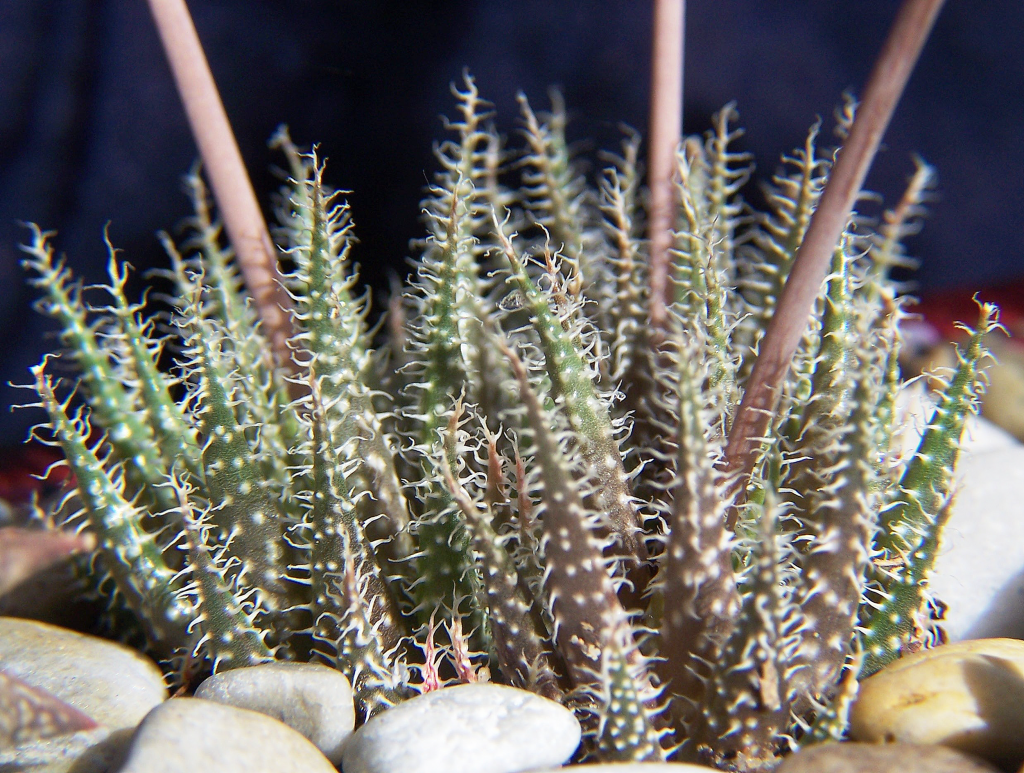Aloe haworthioides was described by Baker in 1887, moved to a unispecies genus Aloinella by Lemée in 1939 and then into Lemeea by Heath in 1993. This was wisely all undone by G. F Smith et al in 1995. This taxonomic dance is one of those events which probably bring taxonomy into disrepute in the minds of people otherwise respectful of scientific process.
A. haworthioides is rather symbolic of the deeper problem in the genus Aloe and related genera. This problem is that the genera are not firmly embedded in divine dispensation and there is much room for doubt about how they could be classified. Heath’s play with the generic status of the nine small Madagascan aloes rather demonstrates what can pass for well-reasoned, logical argumentation, just as surely as the same arguments were dismembered by Smith et al.
In pondering Haworthia, I have had to consider flower structure in relation to plants which are not Haworthia. So here I present a number of illustrations which show just how different A. haworthioides actually is. To answer “From what?” is a lot more difficult because of all the options available. A. haworthioides is a very small plant and seldom seems to reach a height of more than 80mm. It has many small slender leaves which are quite spinose to the point of “arachnoid’ hairiness and hence its visual similarity to Haworthia (fig.1 above).
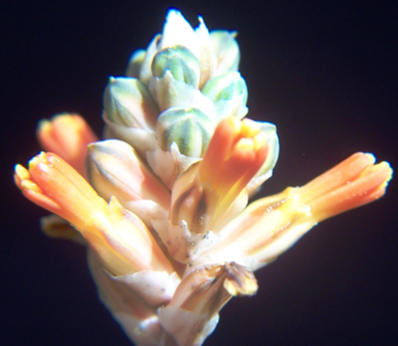
Fig. 2 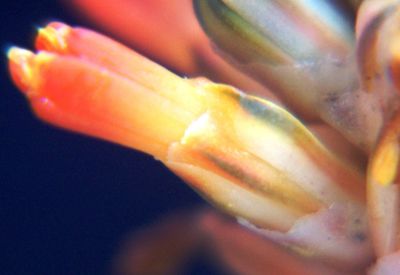
Fig. 3 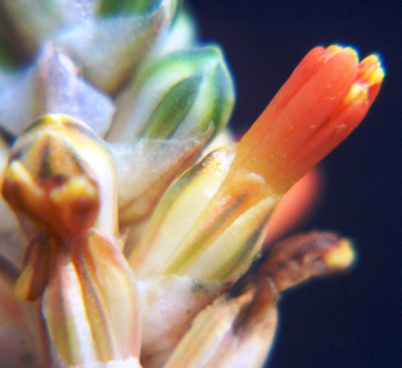
Fig. 4 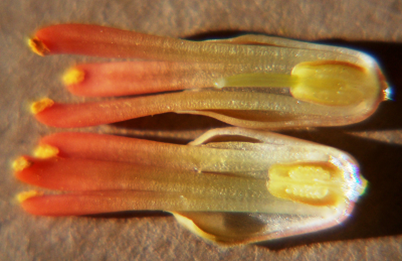
Fig. 5 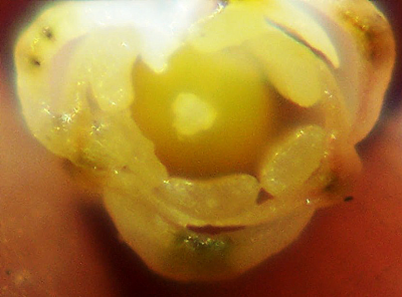
Fig. 6
The flower is something else and I suppose it could be described as “aloid”. The inflorescence is sub-capitate to cylindric with the flowers congested at the end of the peduncle (fig. 2). The tube of the floret is quite short and the lobes are free to the base (fig. 3). To what extent fusion of florets in the genus is indicative of relationship is a question I wish I could answer. It is nearly as problematic as the question of zygomorphy and actinomorphy, which is exacerbated by the fact that observers will insist there is some sort of twilight zone where the exclusivity of these states dissipates. In bulbs, writers describe the petals as “united into a tube” rather than plump for a word like “fused”. The conditions exist where there is a true tube which has no visible differentiation into tepals, where the tepals are fully fused and yet visible, tightly adnate and almost inseparable, and fully free. All four conditions may occur in the same flower with increasing distance from the base along the “tube”. The use of the word tepal is also prone to some doubt because it is used when the inner and outer petals of a flower are “similar” and it is not certain what constitutes “dissimilar”.
It is instructive to consider that Reynolds abandoned any system of formal sections for his second volume of Aloes of tropical Africa. Where in his first volume, he went to great pains to formally maintain hierarchy. In the second volume, he grouped 13 very small Madagascan species together and wrote “They do not comprise a homogenous group. Species with widely divergent characters are included only on account of their small size to facilitate identification”.
What is quite dramatic about A. haworthioides is the nature of the stamens. The filaments are exserted, but they are very broad so that they form an apparent extension of the floral tube. It is again interesting to turn to Reynolds. He writes “Perianth white to pale pink, slightly campanulate…Filaments dilated, remarkably thick and fleshy, the 3-inner narrower and lengthening before the three outer, with their anthers in turn exserted”. I am inclined to grasp these words as justification for the poetic license or plain hermetics of my own writing. In the plant I have, the flower is hardly describable as campanulate (bell-shaped), the filaments are certainly subequal in length. but very similar in width, while anthers are barely exserted beyond the length of the filaments. Reynolds poetic license seems to extend to the variety aurantiaca where “the whole spike, including the axis, bracts and perianths of a beautiful bright orange-red, with the stamens yellow”. Again in the plant at my disposal it seems as though it is only the filaments which are orange-red and the anthers only are yellow. The style is relatively short and is not exserted like the filaments.
I am sure that many other Aloe species could be analysed in critical fashion and probably more effectively than this, to show that the genus is possibly a very artificial construct. I say this because observers have tended in the past to take the same broad uncritical view of Haworthia, as Dr L A Codd once did, when he wrote to me to say that “we are ignoring the small differences”. This was in response to my complaint that ALL haworthia flowers were said to be small and the same when his staff lumped Chortolirion into Haworthia.
It seems to me that we are facing an onslaught on classification driven by the novelty and promise of molecular studies where DNA is seen as the ultimate solution to problems of classification. I have my very grave doubts. Aloe haworthioides is an oddity and while DNA studies will surely support this and enable better explanation of its relationships, identification and recognition by name may be better left as it is. Molecular biologists will lead us the way of Reynolds, which is the appreciation of the fact that hierarchical structure in classification is often misconstruction. We also do not all perceive names and their meaning in the same way. If we simply altered our way of thinking by an educational process perhaps we would be better off. The binomial system has worked remarkably well to date, and can continue to do so if we meddle with it with more circumspection.

